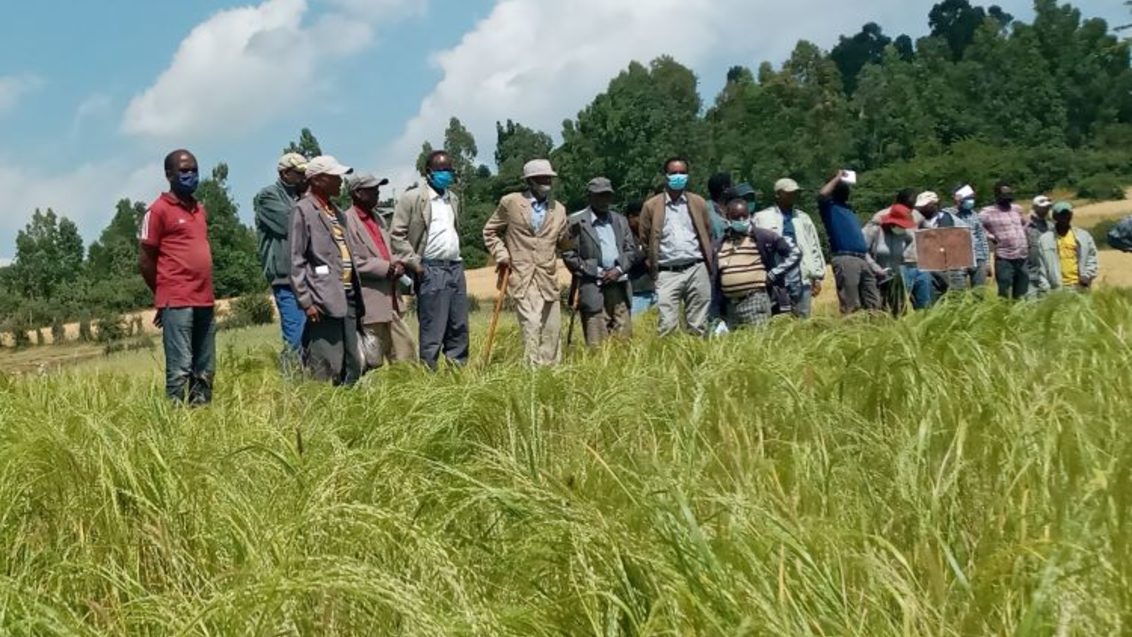Hope, blessings and a semi-arid reminder

Tef is a crucial cereal for Ethiopian food security. Conventional varieties have low yields. Our partnership to raise productivity now has three new varieties in farmers’ fields.
Ethiopia is currently often in the headlines for sad reasons. First came a plague of locusts and now there is internal conflict. Other news from the country is more positive, however – including that from our Tef Improvement Project. TIP is progressing well.
In collaboration with the Ethiopian Institute of Agricultural Research (EIAR), the project has so far released three improved tef varieties. Tesfa appeared in 2017, with Ebba and Bora following in 2019. Tesfa caught farmers’ eye because of its unusually compact panicle (the plant’s flower cluster). «This variety brought a number of advantages over conventional tef», says TIP lead Zerihun Tadele from the University of Bern, Switzerland. «However, we wanted to give smallholders greater choice and develop varieties for a range of growing conditions.»
Tesfa and Ebba are recommended for intermediate and high altitudes with plenty of rain. TIP bred Bora for low altitudes with scarce moisture. «Breeding and initial testing take place at EIAR’s National Tef Research Coordinating Center at Debre Zeit», explains Tadele. «Further tests and validation then run at some 15 centers in different agro-ecological regions.»
«All three varieties are currently being disseminated in various tef-growing areas», comments our Foundation’s R&D Lead Dominik Klauser. «We expect a fourth option with increased drought-tolerance to be approved by March 2021.» Dissemination is mainly through lead farmers and small seed companies. EIAR’s Abate Bekele manages this part of the program. He is initially concentrating on four districts: Moretna Jirru (about 150 km north of the capital, Addis Ababa), Ada (50 km south), Gimbichu (80 km east) and Minjar-Shenkora, 100 km to the south-east.
The name Tesfa means ‘hope’ in the Ethiopian language Amharic. Ebba is the Oromo word for blessing. «The variety’s name also pays homage to Tadessa Ebba, a researcher who significantly improved tef in the 1970’s», adds Zerihun Tadele. Bora is a semi-arid district in central Ethiopia, reminding farmers of the conditions for which this variety is best suited.
Ethiopians grow tef on about three million hectares, 30% of the total cereal area. Unlike other grains, the crop is extensively cultivated from the lowlands right up to altitudes of more than 2500m. Lower areas are generally warm and dry, while high altitudes are cool and wet.
Tef publications are available here.
Our photo shows farmers inspecting Bora tef at a recent field day near Debre Zeit. Photographer: Eshetu Alemu.
